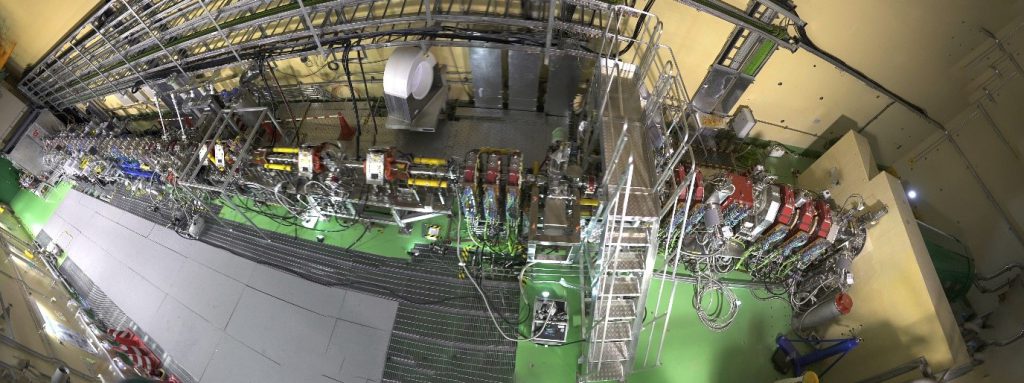LIPAc accelerator prepares for continuous beam operation

Commissioning and operation from the central control room. Rokkasho, December 2021. © IFMIF/EVEDA
Work on the Linear IFMIF Prototype Accelerator (LIPAc) continues at full speed after the successful beam operation of last summer. This accelerator, jointly developed by Europe and Japan in the framework of the Broader Approach agreement, aims to validate the design of a future neutron source to test materials for fusion machines that will follow ITER. As scheduled, operation resumed in October 2021 to finalise the commissioning of some diagnostics in the central control room.
The previous beam operations provided the team with lessons to optimise some processes, tools and systems of the accelerator. As an example, work was carried out to enhance the performance of beam position monitors. These are among the most important diagnostics in the accelerator enabling to centre the beam, to measure its energy, and inform on several parameters to control its position.
The first stage of this new beam operation helped experts not only to check that all systems functioned properly, but also to train on-site operators on how to run the machine safely with the remote support of European experts. About 25 people worked on-site during these operations, reaching up to 40 if one counts those connected remotely.
To minimise risks so as not to damage the accelerator, a low current beam of protons, and later deuterons (particles made of one proton and one neutron), were used in this first stage. Specifically, experts have developed a set of procedures to avoid the most hazardous consequences. “The procedures are the backbone of our activities because they are used not only to reduce the risks during any intervention, but also to collect knowledge from our experts for continuous improvement”, explains Yann Carin, Machine Operation Group co-Coordinator. This first stage of beam operation was completed on 17 December.
LIPAc entered its maintenance periods during summer and winter after each beam operation. During this period, regulatory inspections and periodic preventive tasks are performed to improve the machine. Also, the co-ordination of all the concurrent tasks during these periods, with the development of maintenance plans for each subsystem, was carried out. These improvements in the maintenance activities have increased the reliability of operations.

After the end of winter maintenance, in January 2022, experts started to prepare for their next challenge, namely to operate the accelerator at what experts call continuous wave (using a continuous beam instead of a pulsed one) and nominal conditions. This preparation encompasses the injector of LIPAc, which is expected to reach 125 mA of deuteron current in continuous wave, and the conditioning of the Radio Frequency Quadrupole (RFQ). With its 9.8 m length, the RFQ is the longest one in the world and is needed to enable further acceleration of the particles at 5 MeV. The objective is that the cavities of the RFQ reach a voltage of 132 kV. So far, engineers have succeeded in reaching the continuous wave of the RFQ, but at 80 % of the nominal cavity voltage.
These preparatory works are done with the close collaboration of CEA (France) for the injector and INFN (Italy) for the RFQ thanks to the remote participation tools developed. “INFN built the RFQ so my colleagues and I contribute to its conditioning via daily meetings and operation support as well as by regularly following its evolution via the remote participation tools. Although the current circumstances prevented us to be physically in Rokkasho, we are able to follow up operations in the closest possible way to being on-site,” comments Antonio Palmieri, INFN Radio Frequency Engineer. Once these two activities towards continuous wave are completed by mid-year, the second stage of the operation will start, aiming to reach continuous wave with the whole machine.
Meanwhile, the next operation phase is already in preparation. A large helium tank has been installed in the cryoplant. This is the second storage, and it has already been connected to the cryogenic system and filled with pure helium. The cryoplant will be used to keep the cryomodule, the superconducting accelerating unit of LIPAc, at a temperature of 4.5 K (-269 °C). This module includes, among other components, eight superconducting solenoid packages to transport the beam. These components were the last to be received in Rokkasho by the end of 2021. Once the cryomodule is assembled, it will enable the final step of the acceleration of deuteron particles up to 9 MeV.